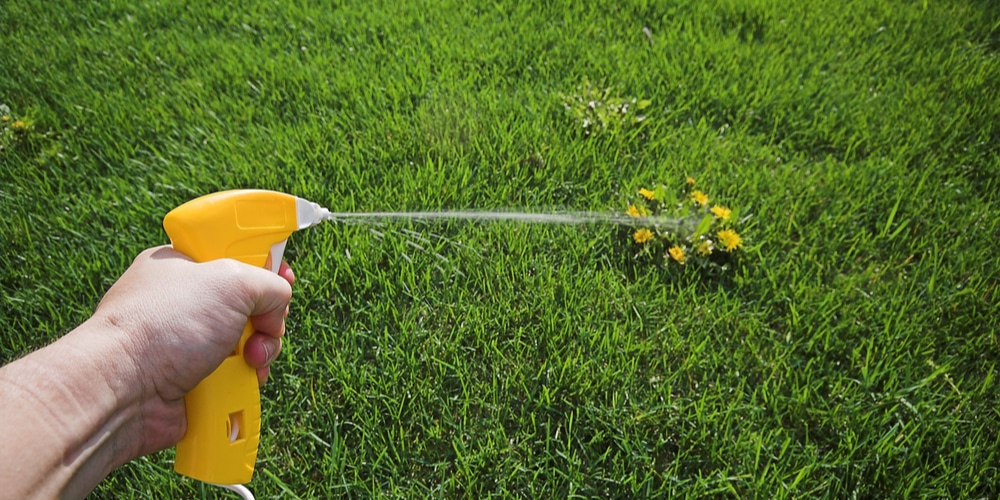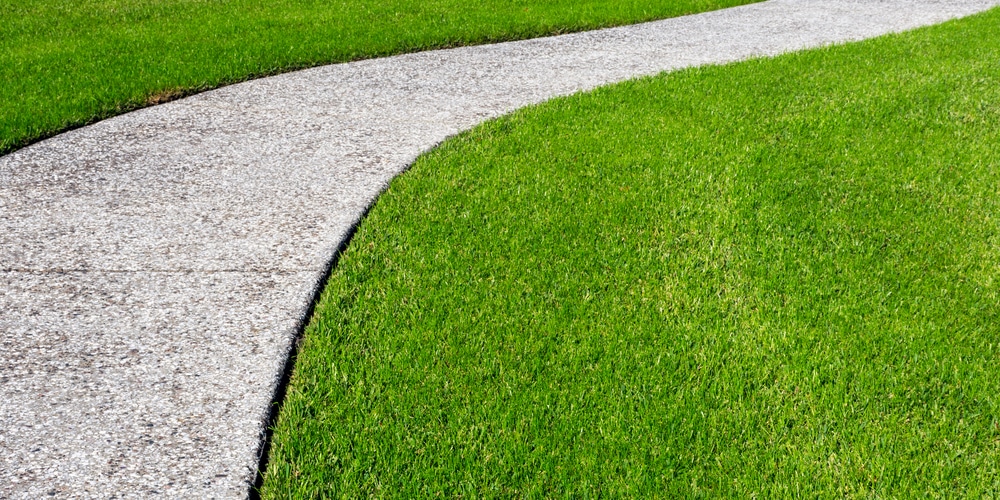Kill ‘Em Early
As you prepare to tackle the annual resurgence of weeds in your garden, it’s crucial to recognize the common types you’ll encounter during spring:
- Broadleaf: Typically wide-leaved; e.g., dandelions.
- Grassy: Resemble lawn grass; e.g., crabgrass.
- Sedge: Tough, grass-like; e.g., yellow nutsedge.
Weeds emerge following two main lifecycles:
- Annual: Complete their cycle in one year, seeding aggressively.
- Biennial: Spread out their cycle over two years, foliage first year, seeding the second.
- Perennial: Persist for multiple years, often tougher to eradicate.
Your spring weed control strategy requires knowledge of these groups because treatment and preemptive measures differ.
Some proven tactics you should consider include:
- Mow higher: Promotes a thick lawn that shades out weed seedlings.
- Timely herbicide application: Use pre-emergence herbicides for crabgrass before it sprouts, or post-emergent as weeds appear.
Remember, appropriate identification is the linchpin in effectively managing these unwelcome guests. Consider contacting a local extension office or consulting lawn care resources like Lawn Doctor for more in-depth information tailored to your specific region.
Prepping for the Destruction
Effective weed management begins with thorough preparation. Accurate soil assessment and having the right tools at your disposal are crucial for success in controlling spring weeds in your lawn and garden.
Soil Assessment
- Test Your Soil: Begin with a soil test to determine its pH, nutrient levels, and composition. This will help you understand which types of weeds may thrive in your soil and how to adjust your management tactics.
- Identify Problem Areas: Check for compacted or waterlogged sections as these can be hotspots for weed growth. Aerating might be necessary to improve these conditions.
Choosing the Right Tools
- Essential Tools for Weed Removal: Equip yourself with the basic tools such as a garden hoe, a dandelion digger, and a weeding fork for manual removal of weeds.
- Sprayers and Spreaders: For applying herbicides, choose a quality sprayer for liquid applications or a spreader for granular products. Ensure it’s properly calibrated for even distribution.
Effective Weed Removal Techniques
When it comes to managing spring weeds, employing the right removal techniques can make all the difference. Tackling these unwanted plants requires a blend of precision and timing to keep your lawn and garden healthy and aesthetically pleasing.
Mechanical Methods
Hand Pulling:
- Suitable for young weeds: Grasp the base, then pull gently to remove roots.
- Use tools for tougher weeds; a weeding fork can help pry out the root system.
Tilling:
- Prevent weed germination by disrupting the soil before weeds establish.
- Tilling should be done sparingly to avoid soil compaction and disruption of beneficial organisms.
Hoeing:
- Effective for dislodging young weeds before they set deep roots.
- Perform regularly to maintain a weed-free environment.
Organic Herbicides
- Pour directly onto weed, a method highlighted by The Spruce as effective especially for young weeds.
Vinegar-based Herbicides:
- Apply on a sunny day for best results; acetic acid desiccates the weed.
- Beware of surrounding plants as vinegar is non-selective and can harm desired vegetation.
Mulching Strategies
Organic Mulches:
- Wood chips or straw: Add a layer around plants to suppress weeds and retain soil moisture.
- Remember to keep mulch away from the base of plants to prevent rot.
- Options like black plastic sheeting create a barrier against sunlight, inhibiting weed growth.
- Use in conjunction with organic mulches for enhanced effectiveness.
Maintaining a Healthy Lawn and Garden
A well-maintained lawn and garden are the cornerstones of a beautiful outdoor space. By staying diligent with regular care and timely interventions, you can prevent weed infestations and promote a healthy, vibrant yard.
Regular Monitoring
- Inspect Weekly: Perform a weekly walk-through of your lawn and garden to check for early signs of weed growth or pest infestation.
- Identify Weeds: Recognize common weeds in your area to determine the best control method. Early detection can be crucial in preventing them from taking over.
Fertilization and Watering
- Soil Testing: Before fertilizing, conduct a soil test to identify nutrient deficiencies.
- Fertilizer Application: Utilize a balanced fertilizer that suits your lawn’s and garden’s specific needs.
- Irrigation Schedule: Set a consistent watering schedule. Early morning watering can minimize evaporation and disease development.
Reseeding and Planting
- Overseed Lawns: In early spring, overseed thin areas to discourage weed emergence.
- Select Resistant Varieties: Choose grass and plant varieties that are resistant to pests and diseases for your region.
- Proper Spacing: When planting, give each plant enough room to grow without competing for light and nutrients, reducing the chance for weeds to establish.
Seasonal Lawn Care Tips
Spring brings new growth and vibrant colors, but it also ushers in the challenge of managing weeds in your lawn and garden. To keep your outdoor space healthy and immaculate, follow these effective strategies:
- Early Detection: As the saying goes, “The early bird catches the worm,” and the same applies to weed management.
- Scout your lawn regularly for any signs of weed emergence.
- Taking action early can prevent weeds from establishing and spreading.
- Proper Identification: Knowing your enemy is half the battle won.
- Identify whether you have broadleaf, grassy, or sedge weeds. This will tailor your approach.
- For more information on weed types, look into how to Identify Weeds in Spring.
- Cultural Practices: Cultivate a robust lawn to naturally suppress weeds.
- Mow at the right height—cutting too short can weaken grass and welcome weeds.
- Water deeply but infrequently to encourage deep root growth.
- Fertilization Strategy: Nutrient-rich soil is the foundation of a strong lawn.
- Apply a nitrogen-rich fertilizer in the early spring to kickstart growth.
- Consider an organic, slow-release fertilizer to nourish your lawn over time and potentially crowd out weeds.
- Herbicide Applications: When necessary, use herbicides responsibly.
- Use a pre-emergent herbicide early in the season to prevent weed seeds from germinating.
- Apply post-emergent herbicides to targeted areas when weeds are actively growing.
Lawn Care Schedule:
- Early Spring:
- Begin mowing as needed.
- Apply pre-emergent herbicides if you had weed issues the previous year.
- Mid to Late Spring:
- Increase mowing frequency as growth accelerates.
- Fertilize and spot-treat for weeds as necessary.
Frequently Asked Questions
Effectively managing spring weeds in your lawn and garden involves various techniques, from natural control methods to the use of preventive materials.
What are natural methods to control spring weeds in lawns and gardens?
- Hand pulling weeds can be a highly effective and immediate solution, especially for annual weeds.
- Mulching garden beds inhibits weed germination and growth by blocking sunlight and regulating soil temperature.
What are some cost-effective strategies to prevent weed growth in gardens?
- Apply a pre-emergent herbicide to target weeds before they grow. Proper timing is key, which is typically when soil temperatures consistently reach 50 degrees.
- Cultivating the soil regularly allows you to disrupt weed growth without investing heavily in products or services.
Which materials can prevent weeds from surfacing in landscaping areas?
- Landscape fabric offers a sturdy barrier that still allows water and air to reach the soil, reducing weed invasion.
- Organic mulches, such as wood chips, not only suppress weeds but also add nutrients to your soil as they decompose.
What steps can be taken to manage weeds in a vegetable garden effectively?
- Install raised beds to improve drainage and reduce the likelihood of weed problems.
- Utilize closer plant spacing in your vegetable rows, which shades the soil and reduces the space available for weeds to establish.
How can I eliminate spring weeds and encourage grass growth at the same time?
- Overseed your lawn in the spring to encourage thick grass growth, which naturally outcompetes weeds.
- Employ selective herbicides that target broadleaf weeds without damaging your grass.
What is the most efficient technique for dealing with a heavily weeded lawn?
- Start with a broad-spectrum herbicide application that targets a wide range of weed species.
- Follow up with reseeding or sodding to quickly establish healthy grass in the cleared areas.
Last update on 2025-04-01 / Affiliate links / Images from Amazon Product Advertising API





